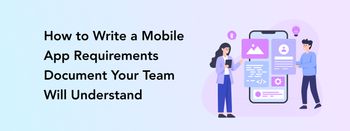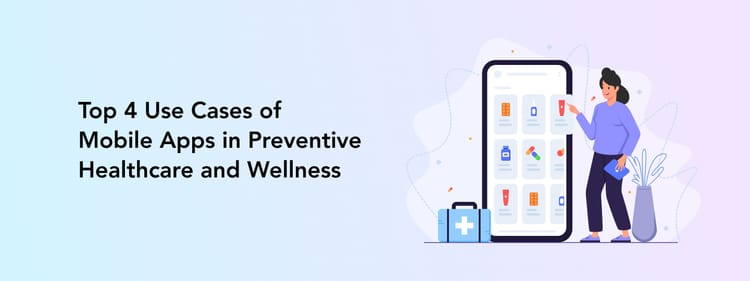With an all-present trend for convenience and simplicity, banks and financial institutions started introducing online services with various features, from balance inquiry to payment systems. Now, 78% of Americans say no to bank visits and prefer mobile or web banking instead.
It makes sense — with a user-friendly and feature-rich mobile banking app, it is possible to complete any personal finance task with a few taps. From well-established international banks to newly founded neobanks, convenient mobile banking is a must for customer acquisition and retention.
This article will discuss the basic feature set for a mobile banking app, the development process, and the possible cost of this product type.
Top Features to Include in a Mobile Banking App
A high level of security and convenience is what motivates users to download a mobile banking app in the first place. Let’s review a feature set that brings together an ultimate mobile banking experience.
Online transfer system
This essential feature enables users to effortlessly transfer funds between accounts, domestically and internationally, directly within the app.
To add mobile payment solutions to your app, your development team will integrate a dedicated API or build a money transfer system from scratch, considering all the industry regulations and your transaction business model.
Talking about regulations, there are several laws to remember, such as
- The General Data Protection Regulation (GDPR)
- The New Payment Services Directive (PSD2)
- Payment Card Industry Data Security Standard (PCI DSS)
An experienced development team should be aware of all the financial industry regulations and will build a product according to those.
eKYC
An electronic Know Your Customer is more than just a new trend in online finance but a powerful security instrument with no better alternative for verifying users today. The eKYC feature streamlines account verification by allowing users to submit their identity documents electronically.
Users can take pictures of their identification documents using their smartphone's camera and upload them directly to the app. Depending on the regional regulations, these documents can include an ID, travel passport, driving license, etc.
It is simple and effective, taking away the pain of extensive paperwork from users and bringing an extra layer of finance data security to your business.
2-step verification system
There is no such thing as too many security measures in a banking app, agree? Of course, let’s not overburden your users with all the extra processes to complete so they get frustrated and quit the app. Still, double-checking their identities and intentions before transferring a large sum of money is a good practice.
With a 2-step verification system, users receive a one-time code via SMS or email after entering their password. This code is required to complete sensitive transactions or log in from a new device, ensuring only authorized users can access the app and its features.
Another popular two-step verification approach combines password and biometrics data, such as facial recognition or fingerprint scanning.
Spending analytics
A budget reporting feature provides insights into spending habits while helping users manage their finances better. The app can
- divide transactions into categories, such as food, utilities, entertainment, etc
- generate spending reports
- display graphs of income versus expenses
Then, the app can generate personalized recommendations for better financial management based on this data.
Deposits and savings
Allow users to create and manage various types of savings accounts within the app. Offer features like fixed-term deposits, recurring deposits, and high-yield savings accounts. Users can set savings goals, track progress, and even automate regular deposits to encourage saving habits.
Transaction history
The transaction history feature empowers users to keep a close eye on their financial activities, offering a clear record of incoming and outgoing transactions. Users can effortlessly monitor payments, deposits, transfers, and more, fostering transparency and aiding in budget management.
Virtual cards
Virtual cards are a digital version of physical payment cards. Users can generate temporary or disposable card details for online purchases, enhancing banking app security. These cards can be easily managed and disabled from within the app. Implementing this feature involves integrating with card processing networks and ensuring PCI DSS compliance.
Plus, users can also create permanent virtual cards to keep savings in their preferred currency or use them while abroad.
Online support
Provide instant customer support through chatbot assistance in banking or live chat features within the app. Users can get quick answers to their questions, report issues, or even initiate transactions with the help of AI-driven chatbots. Seamless integration with support systems ensures that users have a smooth experience when seeking assistance.
Cardless ATM access
Offering cardless ATM access via NFC (Near Field Communication) is a game-changer for modern mobile banking apps. With this feature, users can simply tap their smartphones on compatible ATM terminals to initiate transactions without the need for a physical card.
Cashback
By partnering with merchants or offering cashback on specific transactions, users gain a tangible benefit from using the app. Cashback rewards in banking apps not only encourage users to engage more frequently with the app but also add a layer of value to their financial interactions.
Gamification
Gamification in finance apps is like adding a touch of game-style excitement to how users handle their money. It's about making banking more interactive and interesting.
Do you know how games have challenges and rewards? Well, gamification brings those elements into your banking app. For instance, you could earn badges or points for achieving savings goals or making smart financial moves. Possible gamification strategies include
- Expense tracking rewards
- Badges for certain spending categories
- Savings and financial health challenges
- Financial milestones
- Level system
Remember, the key is to make these game-like features align with personal financial goals, while adding fun and accomplishment to their user experience in finance apps.
How to Build a Mobile Banking App
Let’s now assemble these useful features into one effective mobile application. You are probably curious about the process behind building a mobile banking app from scratch, so let us share how it’s done in Perpetio step by step.
App concept ideation
The journey of building a successful mobile banking app starts with solid concept ideation. It's about understanding the needs of your users and the market trends. Consider features that offer the utmost convenience and security, enabling users to conduct their financial activities with just a few taps. A user-friendly interface, advanced security measures, and integration of various payment gateways are essential elements to consider.
If you don’t have a fully developed idea for your banking app — it’s not a reason to give up. The Perpetio business development team will assist you with defining your product’s competitive advantage and drafting a feature set that stands out.
UI/UX design
The User Interface (UI) and User Experience (UX) design are key to attracting and retaining users. The app design for finance should be intuitive and easy to use, reflecting a seamless user journey.
The online transfer system, for instance, must allow users to move funds between accounts, both domestically and internationally, without a need to understand all the nuances of fintech and know financial terms.
A well-designed interface ensures smooth transactions, while an integrated payment gateway offers flexibility. A professional UI/UX designer will build a convenient and eye-catching interface. Appropriate color palette and memorable visual elements are as important for the app’s success.
Mobile app development
Once you've laid out the blueprint for your mobile banking app features and design, it's time to bring it to life. In the development stage, your vision becomes a tangible reality, offering users a seamless and secure banking experience.
When it comes to app development for banking, there are two main routes to consider: native development and cross-platform development. Native app development involves building separate app versions for each platform — iOS and Android. This approach emphasizes the specific strengths of each platform, resulting in high-performance apps that seamlessly blend with the user experience of each operating system.
Cross-platform app development, on the other hand, allows you to create an app using a single codebase that works across both iOS and Android platforms. Technologies like Flutter and React Native enable developers to write code once and deploy it on multiple platforms. This approach can save time and resources, making it an attractive choice for businesses looking to reach a broader audience quickly.
Whether you prioritize platform-specific advantages or seek an efficient cross-platform solution, we work with you to deliver a banking app that performs seamlessly, meets user needs, and adheres to industry standards.
Testing and launch
Before your banking app makes its grand entrance, a crucial phase awaits: testing and launch. Thorough testing is the cornerstone of a glitch-free experience. It involves rigorous assessments across different levels, security features, and user interfaces. We don’t only check the app for bugs but make sure it corresponds with the original concept and performs all the features as intended.
When it's time to unveil your app to the world, a strategic launch strategy is vital. It's worth noting that Perpetio is here to guide you through the entire process, from development to launch. Our expertise doesn't stop at coding — we assist with launching strategies, ensuring your banking app's introduction to the market is smooth and impactful.
How Much Does it Cost to Create a Neobank App
When it comes to the most crucial question of fintech app development, there is no formula to use for all the cases. The complexity of features, ranging from basic account management to advanced functionalities like eKYC and gamification, plays a significant role in budget estimation. UI/UX design complexity, along with the choice between native and cross-platform development, further influences costs.
A basic banking app MVP (minimum viable product) with the feature set we described in this article will cost you around $ 20 000-30 000. More design customization and more complex features equals more development time and, as a result, higher cost.
At Perpetio, we recognize the importance of budget considerations and work collaboratively to provide transparent cost estimates that align with your project's aspirations. You can get a free project cost estimation by contacting us.
Working Monetization Strategies for a Mobile Banking App
After discussing spending money, it’s high time to talk about making money. You can get your app development investment back and earn some extra profit by implementing the suiting monetization strategies.
Transaction fees
Transaction fees are the most common monetization model for banking apps. Companies change a small percentage from the transfer amount for the service. By transparently communicating these fees, users understand the value they receive in return for these services. This strategy can be particularly effective when offering high-speed or specialized transactions.
Subscription model
Implementing subscription plans can offer users exclusive access to premium features. It could include advanced budget reporting, personalized financial advice, or priority customer support. Subscriptions can be billed monthly or yearly, ensuring a steady stream of revenue while motivating users to receive enhanced functionalities.
Freemium model
Offer a free basic version of the app with limited features and functionalities. Users can then upgrade to a premium version offering more advanced tools and resources. This model encourages users to experience the app's value before committing to a paid subscription.
Partnership collaboration
Another option is engaging in partnerships with relevant third-party financial service providers and earning commissions for users who opt for those services through your app. It could include affiliations with investment platforms, insurance providers, or retail offers aligning with users' financial interests. The cashback feature that we mentioned earlier is one of the effective collaboration strategies too.
White-label solutions
Consider offering white-label mobile banking versions of your app to smaller financial institutions or businesses looking to provide their customers with banking services. Charge a licensing fee for using your app's technology while allowing these partners to customize it to their branding.
Each of these strategies offers a unique approach to monetizing your mobile banking app and can suit your product. The key is to align your chosen strategy with the value you provide to your users, ensuring they perceive the costs as worthwhile investments in their financial well-being.
Consider Perpetio Your Trusted Partner
Embarking on the journey of creating a mobile banking app requires more than technical expertise — it demands a reliable and innovative partner. This is where Perpetio steps in as your trusted ally.
We understand that each project is unique, and that's why our approach is tailored to suit your specific needs. With a custom approach to every client, we take the time to understand your goals, challenges, and aspirations. Whether you're aiming for a cutting-edge neobank app, a gamified banking experience, or digitalizing your personal finance services, we've got you covered.
Contact us today, and let's start crafting your innovative mobile banking app. With Perpetio as your partner, the possibilities are limitless. Your financial technology journey begins here.





